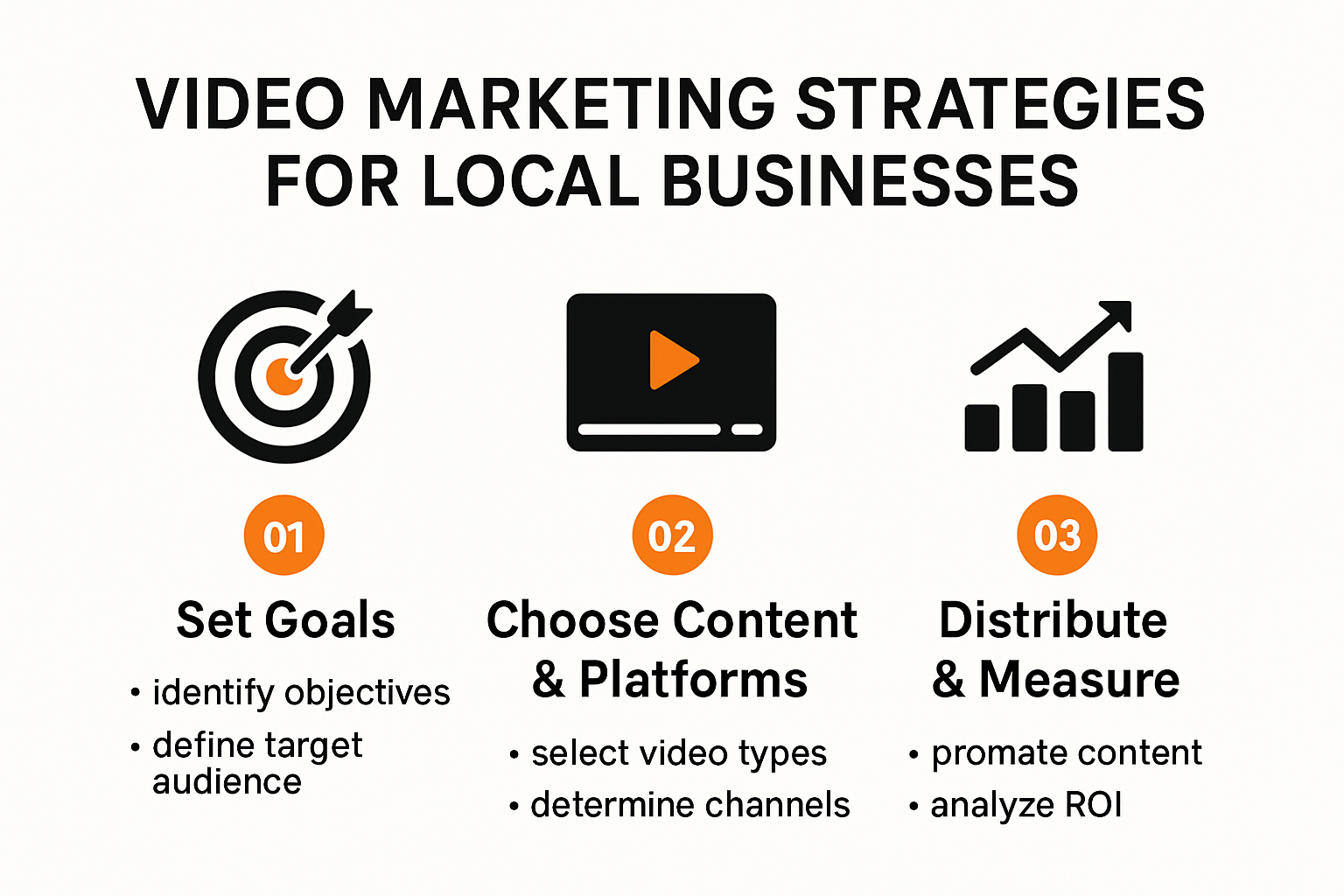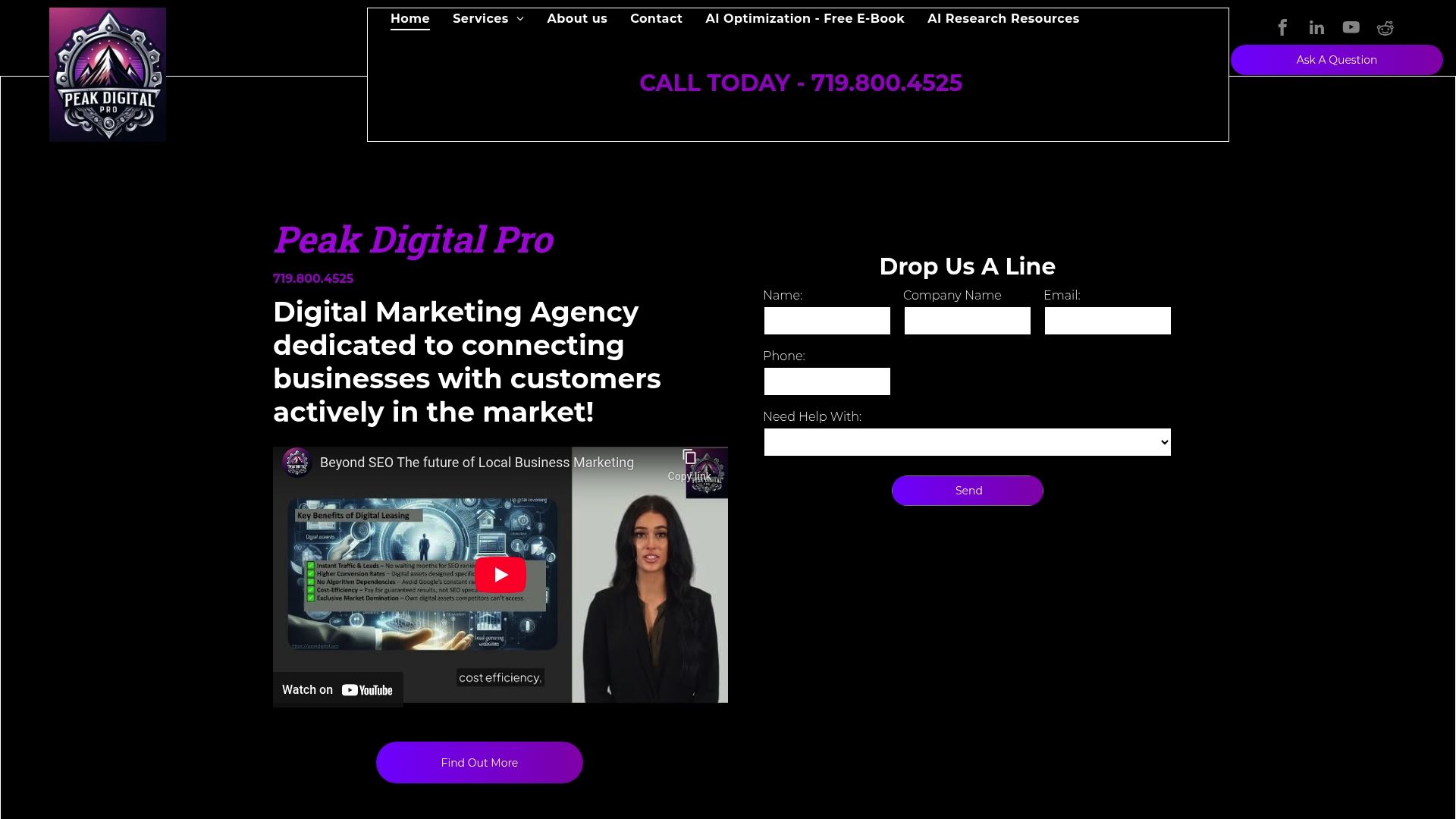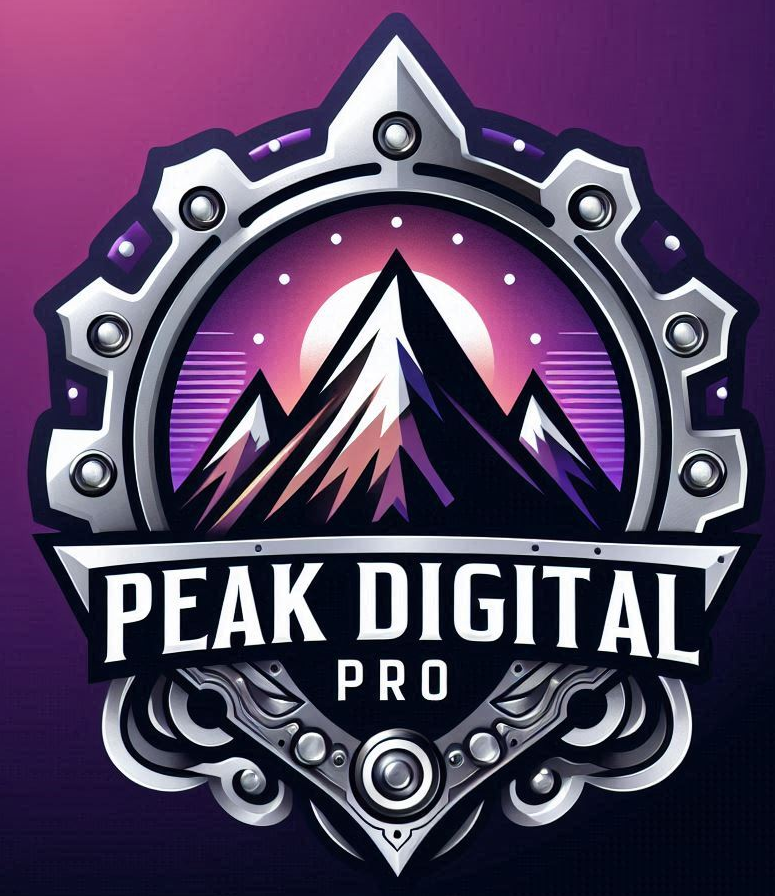Video Marketing Strategies for US Business Owners 2025
Video is everywhere and small business owners are putting it front and center. A massive 91 percent of businesses now use video to grab attention and build trust with local customers. Most would guess this means flashy high-budget productions are taking over. But that is not what works. The real secret is that unpolished, honest videos have the biggest impact and can turn any neighborhood brand into a standout success.
Table of Contents
Quick Summary
| Takeaway | Explanation |
|---|---|
| Video is Essential for Local Business Growth | Utilizing video as a marketing tool is crucial, as 91% of businesses employ it to capture audience attention and build trust in their community. |
| Focus on Authenticity in Content | Consumer preferences lean towards genuine, informative videos that address real customer pain points rather than highly polished corporate productions. |
| Define Clear Objectives for Video Marketing | Successful video marketing hinges on setting measurable goals, such as increasing brand awareness or driving sales conversions, to align content with business strategies. |
| Utilize Advanced Measurement Techniques | Tracking beyond standard view counts is essential; metrics like audience retention rate and conversion tracking provide deeper insights into video performance. |
| Leverage AI for Enhanced Analytics | AI tools can predict viewer engagement and recommend content strategies, giving businesses a competitive edge in video marketing effectiveness. |

Understanding Video Marketing for Local Businesses
Video marketing has transformed how local businesses connect with their target audience. For small and medium enterprises, video content represents a powerful tool to showcase brand personality, demonstrate products, and engage potential customers more effectively than traditional marketing methods.
Why Video Matters for Local Business Growth
Local businesses face unique challenges in capturing audience attention. Research from Wyzowl reveals that 91% of businesses now use video as a marketing tool, highlighting its critical importance in modern digital strategies. Videos provide an immediate and compelling way to communicate complex information quickly, allowing businesses to build trust and credibility within their community.
The visual medium offers several strategic advantages. Short form videos can demonstrate product functionality, showcase customer testimonials, and provide behind the scenes glimpses of business operations. This transparency helps potential customers feel more connected and informed about local service offerings.
Video Content Strategies for Maximum Impact
Google’s latest research indicates that consumers prefer authentic, informative video content over polished corporate productions. Local businesses should focus on creating genuine, value driven videos that address specific customer pain points.
Effective video marketing strategies include:
- Customer Testimonial Videos : Real stories from satisfied local customers build immediate social proof
- Product Demonstration Clips : Short technical demonstrations that highlight unique service capabilities
- Community Engagement Content : Videos showcasing local involvement and business values
Successful video marketing requires understanding your specific audience demographics, technical requirements, and content distribution channels. Local businesses must prioritize creating high quality, relevant video content that resonates with their target market while maintaining professional production standards.
Technical Considerations for Local Business Video Marketing
Producing effective marketing videos does not require extensive technical expertise. Modern smartphones and affordable editing tools make video creation accessible for businesses of all sizes. Focus on clear audio, good lighting, and concise messaging to create compelling visual content.
Distribution remains as crucial as production. Businesses should leverage multiple platforms including social media, company websites, and targeted advertising channels to maximize video reach and engagement. Strategic use of keywords, compelling thumbnails, and consistent branding will help videos perform more effectively across digital platforms.
Effective Video Content Types and Platforms
Navigating the diverse landscape of video content requires strategic understanding of different formats and platforms. Local businesses must select video types and distribution channels that align with their specific marketing objectives and target audience preferences.
Strategic Video Content Categories
HubSpot’s Marketing Research demonstrates that different video types serve unique marketing purposes. Understanding these categories helps businesses craft more targeted and effective video strategies:
- Explainer Videos : Concise 60-90 second videos that break down complex products or services
- Tutorial and How-To Content : Educational videos that provide practical value to potential customers
- Behind-the-Scenes Footage : Authentic glimpses into business operations that build transparency
- Customer Testimonial Videos : Social proof through real customer experiences and success stories
Each video type serves a specific strategic function. Explainer videos introduce complex offerings, tutorials position a business as an industry expert, behind-the-scenes content humanizes the brand, and testimonials establish credibility through peer validation.

Below is a summary table comparing key video content types and their main purposes, to help businesses quickly identify which formats suit their marketing needs:
| Video Content Type | Primary Purpose | Key Benefit |
|---|---|---|
| Explainer Videos | Simplify complex products/services | Quick understanding |
| Tutorial/How-To Videos | Educate and provide practical value | Establish expertise |
| Behind-the-Scenes Footage | Show transparency and company culture | Humanize the brand |
| Customer Testimonial Videos | Share real customer stories for social proof | Build trust/credibility |
Platform Selection and Optimization
Sprout Social’s Platform Analysis reveals distinct audience behaviors across different video platforms. Businesses must understand the unique characteristics of each channel to maximize engagement:
YouTube
: Best for longer educational content and SEO-driven videos
Instagram
: Ideal for short, visually compelling clips and stories
TikTok
: Optimal for trend-based, creative short-form content
LinkedIn
: Professional platform for B2B service demonstration videos
Facebook
: Broad reach with versatile video advertising options
Successful video marketing demands platform-specific strategies. Each platform requires tailored content length, style, and messaging to effectively capture audience attention.
Below is a comparison table outlining the strengths and recommended uses for popular video marketing platforms:
| Platform | Strengths | Recommended Video Type |
|---|---|---|
| YouTube | Searchable, SEO, long-form capabilities | Tutorials, Explainers, Education |
| Visual, Stories, short-form | Quick clips, Behind-the-Scenes | |
| TikTok | Trend-driven, viral, creative | Short, fun, trend-based content |
| Professional, B2B audience | Corporate, Case Studies, Demos | |
| Broad reach, ads versatility | Ads, Testimonial, Community Focus |
Technical Optimization and Performance Metrics
Producing compelling video content extends beyond creative development. Technical optimization plays a crucial role in video marketing success. Businesses must focus on:
- Ensuring mobile-friendly video formats
- Implementing clear, attention-grabbing thumbnails
- Using strategic keyword tagging
- Creating closed captions for accessibility
- Maintaining consistent brand visual identity
Performance tracking remains essential. Businesses should monitor key metrics like view duration, engagement rates, click-through percentages, and conversion impact. These insights allow continuous refinement of video marketing strategies, ensuring maximum return on content investment.
By understanding different video content types, selecting appropriate platforms, and maintaining technical excellence, local businesses can develop powerful video marketing approaches that effectively communicate their unique value proposition.
Creating a Results-Driven Video Marketing Plan
Developing a strategic video marketing plan requires precision, clear objectives, and a systematic approach to content creation and distribution. Successful businesses understand that random video production does not guarantee marketing success.
Defining Clear Marketing Objectives
Content Marketing Institute research indicates that businesses with well-defined marketing objectives are 313% more likely to report successful content marketing campaigns. For video marketing, this means establishing specific, measurable goals that align with broader business strategies.
Key objectives might include:
- Brand Awareness : Increasing visibility and recognition within target market
- Lead Generation : Creating compelling content that drives potential customer inquiries
- Customer Education : Providing valuable information that positions the business as an industry expert
- Sales Conversion : Developing videos that directly support purchase decision making
Each objective requires a tailored approach. Brand awareness videos differ significantly from direct sales content in tone, structure, and distribution strategy.
Audience Targeting and Content Mapping
Google’s Consumer Insights reveals that personalized video content generates 60% higher engagement rates compared to generic messaging. Successful video marketing demands deep understanding of target audience segments.
Effective audience targeting involves:
- Developing detailed customer personas
- Understanding demographic and psychographic characteristics
- Mapping content types to specific audience segments
- Creating videos that address specific pain points and interests
Businesses must move beyond demographic data and develop genuine insights into customer motivations, challenges, and preferences. This approach transforms video content from generic messaging to targeted communication.
Production and Distribution Strategy
A comprehensive video marketing plan requires integrated production and distribution considerations. Technical quality, storytelling effectiveness, and strategic platform selection work together to maximize content impact.
Key strategic elements include:
- Establishing a consistent production workflow
- Investing in basic video production equipment
- Developing a content calendar for regular video releases
- Creating a multi-platform distribution strategy
- Implementing performance tracking mechanisms
Distribution should never be an afterthought. Businesses must plan how each video will be shared across different platforms, considering unique algorithmic requirements and audience expectations.
Budget allocation is crucial. While high-end production can be beneficial, many successful videos demonstrate that authenticity and value matter more than expensive equipment. Small businesses can create compelling content with smartphones and basic editing tools.
Video marketing success emerges from strategic planning, audience understanding, and consistent execution. By developing a structured approach that prioritizes clear objectives and audience needs, businesses can transform video content from an experimental marketing tactic into a powerful growth driver.
Measuring Video Marketing Success in 2025
As video marketing continues to evolve, sophisticated measurement techniques become critical for businesses seeking tangible returns on their content investments. Understanding and tracking the right metrics will separate successful video strategies from ineffective approaches.
Advanced Performance Metrics Beyond Views
Forrester Research indicates that traditional view counts are no longer sufficient for meaningful performance evaluation. Modern video marketing requires a more nuanced approach to measuring engagement and impact.
Key advanced metrics businesses should track include:
- Audience Retention Rate : Percentage of video watched by viewers
- Conversion Tracking : Direct connections between video content and sales outcomes
- Engagement Depth : Measuring interactions like shares, comments, and click-throughs
- Audience Sentiment Analysis : Qualitative assessment of viewer reactions and emotional responses
These metrics provide deeper insights into video content effectiveness, moving beyond surface level engagement measurements. By understanding how audiences interact with video content, businesses can continuously refine their marketing strategies.
AI-Powered Analytics and Predictive Insights
Gartner’s Technology Research highlights the emerging role of artificial intelligence in video marketing analytics. AI-driven tools now offer unprecedented capabilities for understanding viewer behavior and predicting content performance.
Advanced AI analytics can:
- Predict viewer engagement before content publication
- Identify optimal posting times
- Recommend content modifications based on audience data
- Generate detailed audience segmentation insights
- Provide real time performance recommendations
Businesses that leverage these advanced technologies gain significant competitive advantages. AI transforms video analytics from retrospective reporting to proactive strategy development.
Cost Effectiveness and ROI Measurement
Measuring video marketing success ultimately requires a clear understanding of return on investment. Businesses must develop robust frameworks for connecting video content to tangible financial outcomes.
Effective ROI measurement involves:
- Establishing clear financial benchmarks
- Tracking customer acquisition costs
- Measuring direct revenue generated from video content
- Calculating lifetime value of customers acquired through video marketing
- Understanding attribution models that connect video content to sales
Modern video marketing demands a holistic approach to performance measurement. Businesses cannot rely on vanity metrics or superficial engagement indicators. Instead, they must develop comprehensive analytics frameworks that provide actionable insights and demonstrate clear business value.
By embracing advanced measurement techniques, leveraging AI technologies, and maintaining a strategic focus on meaningful performance indicators, businesses can transform video marketing from an experimental tactic to a precise, data driven growth engine. The future of video marketing lies not just in content creation, but in intelligent, insight driven strategy implementation.
Frequently Asked Questions
What is the importance of video marketing for local businesses in 2025?
Video marketing is crucial for local businesses as 91% of them are now using video to capture attention and build trust with their community. Authentic, unpolished videos connecting with the audience can significantly enhance brand visibility and customer engagement.
How can small businesses create impactful video content?
Small businesses can create impactful video content by focusing on authenticity, addressing customer pain points, and utilizing simple formats like customer testimonials, product demonstrations, and community engagement videos. High-quality production isn’t necessary; clear audio and good lighting are key.
What video platforms should local businesses use in 2025?
Local businesses should consider platforms based on their audience type: YouTube for long-form educational content, Instagram for visually compelling short clips, TikTok for trend-driven content, LinkedIn for B2B videos, and Facebook for broad reach and versatile advertising.
How can businesses measure the success of their video marketing strategies?
Businesses can measure video marketing success by tracking advanced metrics like audience retention rates, conversion tracking, engagement depth, and using AI-powered analytics for insights. These metrics provide a deeper understanding of video effectiveness beyond basic view counts.
Ready to Transform Your Video Strategy Into Real Growth?
Struggling to convert video views into real business results or to build local trust with authentic content? Our article highlighted how most business owners in 2025 face these exact barriers. Without a clear plan or expert support, it’s easy to waste effort on videos that do not drive sales or build lasting customer loyalty. If you are searching for genuine results, you need proven tactics and a team that truly understands advanced video marketing, from strategic content mapping to AI-driven analytics and multi-platform impact.

Peak Digital Pro brings your strategy from concept to execution. Improve your online visibility, engage your community, and track every lead. Take the next step with Peak Digital Pro to unlock high-impact video marketing, advanced SEO, and cutting-edge analytics. Do not let another year pass by while your competitors take the lead. Contact us now and see just how much your business can grow.








